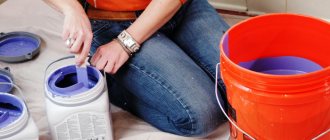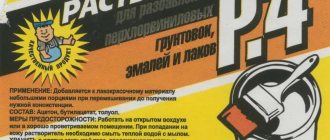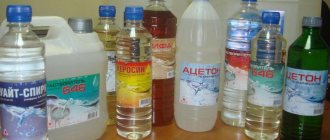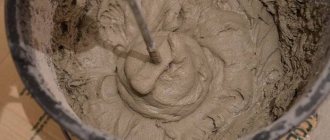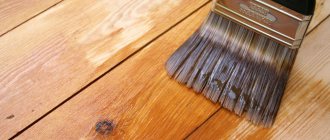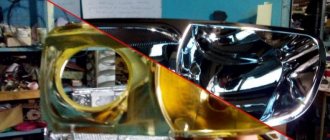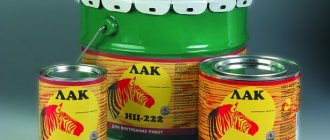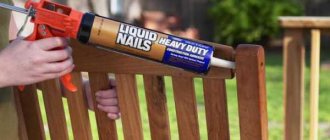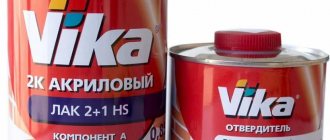Solvent 646 is a representative of the line of organic solvents. It is in high demand among craftsmen because it is effective at a fairly low price.
- What is solvent 646?
- Scope of application R 646
- Advantages and disadvantages of the product
- Solvent 646: safety precautions
- Solvent 647
- Characteristics
- Application
- be careful
- Solvent R-4
- Composition and properties
- Application
- Safety
- The main differences between solvents
- Solvent 646, 647, P4 for removing liquid nails
- Household chemicals as a replacement
- Recommendations for use
R-646 is a universal product, therefore it has a wide range of uses. Available in small containers for household purposes and in barrels for industrial enterprises.
What are solvents p4, 646, 647 and similar products used for? They are used in the production sector, in domestic conditions during repairs and construction.
The main purpose of the products is to dissolve paints and varnishes, clean and degrease coatings before scheduled work. For ease of working with them, the article examines:
- purpose and basic rules for using solvents;
- properties, characteristics of each of them;
- tips for proper use.
What is solvent 646?
This material is mainly needed for dissolving and diluting paint-and-varnish materials. It is also used when cleaning surfaces and tools to remove both fresh and old stains of paint, glue, and varnish.
The composition of solvent 646 includes the main component - toluene, and several other impurities: acetone, ethyl alcohol, etc. The substance itself looks like an almost transparent or slightly yellowish liquid that does not separate or precipitate.
The advantage of the composition is its resistance to low temperature conditions. Therefore, the liquid can be stored in cool conditions. The solvent does not leave a matte or white coating on the treated coating after use.
Scope of application R 646
R-646 quickly removes difficult-to-remove chemical stains from hands and clothes. They effectively clean surfaces from rust, grease and hardened adhesive materials.
The universal properties of the product allow it to be used for the following purposes:
- Dissolving varnish and paints.
- Cleaning stains from skin and clothing after interaction with paints and varnishes. Processing tools to remove paint and varnish residues.
- Dilution of putty, thickened paint.
- Bringing the dye to the desired viscosity. Gives the paint more shine.
In addition to plastic, solvent 646 interacts with most coatings: wood, metal, stone, brick, plaster, concrete, etc. However, this is an aggressive agent, so it must be used carefully so as not to damage the coating being treated.
Composition of the substance
This is a multicomponent mixture that includes three required ingredients:
- Butyl acetate – 26%.
- Acetone – 12%.
- Toluene – 62%.
Thanks to this composition, the solvent can interact with any enamels and varnishes that contain chloride resin. In addition, active substances help improve consumer properties. The inclusion of butyl acetate avoids fading of painted surfaces.
Advantages and disadvantages of the product
Summarizing the advantages of p-646, we highlight its high effectiveness and guaranteed results. Solvent 646 does not leave difficult-to-remove marks on the treated surface, which cannot be said about its analogues. Therefore, it can be used to clean even transparent or colored coatings without the risk of spoiling them.
The only drawback is the aggressiveness of the composition, and therefore increased safety requirements when working with it. Therefore, when using the substance, be careful not to harm your health.
Solvent 646: safety precautions
When starting to work with the P646, carefully read the manufacturer's instructions. It specifies the principles of operation and rules for using the composition with a guarantee of safety for the health of the master.
Arm yourself with gloves and a respirator so that the substance does not damage the skin of your hands and respiratory tract. The work area must be well ventilated.
Error
An error has occurred. If you are not sure whether you are using a feature correctly, we advise you to consult our help system for more information.
You are not logged in
To come in.
Most people only know about acetone that it is used as a nail polish remover. At the same time, scientists involved in organic chemistry cannot imagine their lives without it. So, at home, we wash dirty dishes using water, but in the chemical laboratory acetone is used to wash test tubes, cups and other “dishes”. On the website za-mena.ru you will learn its other properties that are useful in the household, as well as information on how to replace acetone as a solvent at home.
Acetone (also known as dimethyl ketone) is an organic compound that is a colorless, volatile, flammable liquid. It was first created in the Middle Ages and has since been used for industrial and domestic needs.
Although acetone is still popular in various fields, consumers are turning to its analogues, guided, among other things, by safety requirements (it can cause poisoning, known as ketoacidosis). You should know that the human body produces acetone as a metabolic byproduct. It is excreted from the body by the kidneys.
Solvent 647
Highly active solvent 647 is similar in principle to P-646. This is an equally effective substance for diluting paintwork materials, degreasing and cleaning.
However, the purpose and components of this tool are different. There is no acetone in p-647. This indicates that the substance is less aggressive towards surfaces that require careful handling.
Characteristics
Its composition differs from product 646. Main components: ethyl acetate, butanol, toluene, butyl acetate, without dimethyl ketone.
Naturally, the set of elements in the composition affects the purpose and characteristics of the material. Solvent 647 has:
- Transparency. It is a colorless liquid. However, a slightly yellowish tint is acceptable.
- Low density for more comfortable work with the material.
- Ability to smooth out scratches. From a visual point of view, the product works with nitro enamels effectively and aesthetically.
Application
Like 646, solvent 647 improves the viscosity of materials containing cellulose. However, this remedy is positioned as less active. It is used on more susceptible surfaces, such as plastic.
Therefore, the purpose of R 647 is broader. It can be used for body work, degreasing coatings, removing paint and varnish residues, even if maximum care is required when interacting with surfaces.
This solvent can be combined with paints and varnishes. Stirring carefully, it is introduced into the composition in strict adherence to the proportions noted in the manufacturer's instructions.
be careful
Solvent 647 should only be stored in closed containers away from high temperatures. The composition should not be exposed to direct sunlight.
For the safety of the master, the work area needs to be ventilated. The solvent itself is toxic, so inhaling its vapors is dangerous.
Approximate consumption rates
To determine this parameter, it is necessary to take into account many nuances. In particular:
- Method of applying paintwork materials.
- Air temperature.
- Shelf life of paints and enamels.
- Category of paints and varnishes.
To clarify, let’s consider consumption rates for specific paints and varnishes. It looks like this:
- ХВ 784 (varnish). 50 and 25% for spray and airless application respectively. Please note that such varnishes cannot be applied with a brush.
- XC 010 (primer) . 40 and 30% for spraying and airless application.
- PF 115/PF 133 (enamel) . The composition is applied with a brush, the consumption rate varies between 12-15% .
- ХВ 124/ХВ 125 (enamel) . For compression and airless application, the consumption of the substance is 50-35% , respectively.
If we talk about the total consumption, then paints and varnishes applied by compressor spraying use 2.5 liters of solvent, and the airless method uses 1.75 liters .
Please note that the figures are approximate. When diluting paintwork materials, the solvent is added fractionally, gradually achieving the required consistency.
Solvent R-4
The colorless (or partially transparent) solvent P4 is positioned as an organic product containing aromatic hydrocarbons and esters. This thinner is used along with similar substances.
The product is often used in post-processing of painted surfaces. It is inexpensive and very effective in operation.
Composition and properties
The material contains toluene. Its share is more than 60 percent. The rest is taken up by acetone and butyl acetate.
Purpose of solvent R-4: this mixture dissolves and thins paints of various types, resins and other substances of organic origin with high productivity.
The material is also transparent. Copes with the task without changing the structure of the treated surface.
Application
This product dissolves and dilutes paints, primers, putties, etc. It is compatible with the products of most popular manufacturers of these products on the market. The material performs well when washing dishes, hands and surfaces after working with paint.
R-4 is characterized by high volatility. After adding it to the paint, the coloring composition will quickly harden, forming a film when applied to the surface.
The manufacturer warns that it is unacceptable to add water to the solvent. The interaction of acetone in the product with moisture leads to the formation of a whitish layer on the paint film.
Safety
Solvent R-4 is positioned as a rather dangerous material. It is toxic, which means you need to work with it only in a ventilated area.
Do not allow it to come into contact with exposed areas of the body. Do not forget about the explosive hazard of the substance, so do not work with it in areas where there are fires.
Technical specifications table
In accordance with the requirements prescribed by GOST number 7827-74 , the substance has the following technical indicators:
- The acidity level is not higher than 0.07 KOH/g .
- The degree of volatility according to the values of ethyl esters is 5-15.
- Coagulation quantity – not lower 24%.
- Part of water in relation to the main mass - 0.7%.
Thanks to such properties, the subject of our conversation is used everywhere in the construction industry, for the dilution of viscous materials.
| Name of indicators | Standard according to GOST 7827-74 |
| Color and appearance | Colorless or slightly yellowish homogeneous light-transmitting liquid without noticeable suspended particles |
| Global share of water according to Fischer, %, not more | 0,7 |
| Ethyl ether volatility | 5 — 15 |
| Acid amount, mg KOH/g, not more | 0,07 |
| Amount of coagulation, %, not less | 24 |
The main differences between solvents
How do these types of solvents differ from each other? To see the difference clearly, we recommend watching the video with the master’s answer to this question:
646 is relatively cheap, but effectively removes stains. Solvent 647 has approximately the same characteristics, but in addition to this it can also be used for plastic.
The R-4 is good for work in situations where you need to play on volatility. This substance quickly creates a film on the paint when applied to the surface.
Amendments and changes to GOST 7827-74:
- Change No. 1 to GOST 7827-74 Change type: Text change Change number: 1 Registration number: 2321
1976-10-14
1976-12-01
- Change No. 2 to GOST 7827-74 Change type: Text change Change number: 2 Registration number: 3828
1979-10-04
1980-02-01
- Change No. 3 to GOST 7827-74 Change type: Text change Change number: 3 Registration number: 1895 New value: –
1984-06-11
1985-01-01
- Change No. 4 to GOST 7827-74 Change type: Text change; Title changed Change number: 4 Registration number: 4324 Old meaning: Solvents of brands P-Ch, P-ChA, P-5, P-5A, P-12, P-2Ch for paints and varnishes. Technical conditions New value: See title
1988-12-20
1989-07-01
- Change No. 5 to GOST 7827-74 Change type: Text change; Title changed; Changed reference ND Change number: 5 Registration number: 265-st Old value: Solvents of P-4, P-4A, P-5, P-5A, P-12 type for paintwork materials. Specifications New value: Solvents of grades P-4, P-4A, P-5, P-5A, P-12 for paint materials. Specifications Replaces: GOST 9980.4-86 with GOST 9980.4-2002, GOST 14192-77 with GOST 14192-96 Introduced: GOST 12.1.004-91, GOST 12.1.005-88, GOST 12.1.016-79, GOST 12.1.044-89, GOST 12.3.002-7
2008-10-16
2009-03-01
Solvent 646, 647, P4 for removing liquid nails
Solvent 647 and other compositions described in the article are effective in removing various contaminants from paints and varnishes. However, few people know that they all remove liquid nails. For example, there are many good videos on the Internet on how to use p4 solvents for such purposes.
Contamination from liquid nails is permanent. Therefore, we recommend pressing a rag soaked in solvent against it for a few minutes so that the substance has time to act. Afterwards, the remnants of liquid nails can be easily removed using improvised means suitable for the treated surface.
Making glue
Polystyrene is a synthetic polymer made from multidimensional styrene, one of the most used plastics, its production scale is several million tons per year. Polystyrene is used to make protective packaging (for peanuts, disks), containers, lids, bottles, trays, disposable cutlery and models.
Polystyrene decomposes slowly, so its production causes a lot of controversy among environmentalists - a large amount of polystyrene in foam is located along the coasts and shipping routes, its amount in the Pacific Ocean is increasing every year.
Spoiled polystyrene does not decompose in nature for hundreds of years and is resistant to photolysis, so finding ways to recycle polystyrene helps minimize the damage caused. Thus, dimethyl ketone can be used as a solvent for polystyrene, and using orange oil, which can replace acetone as a solvent, a non-toxic glue can be created. This glue will be an effective replacement for PVC glue.
Household chemicals as a replacement
There are a lot of alternative products on the market in Moscow. And in the kitchen of any housewife there are a couple of packages of household chemicals for cleaning kitchen utensils.
However, using it to remove difficult stains will require you to work many times longer and harder. However, the quality of the result will not be guaranteed.
Recommendations for use
Consider the purpose of the R-4 solvent and other compounds. Use them in situations where you cannot do without them. Follow the main rules for interacting with such products, excluding amateur activities. In other cases, use other, less aggressive means.
Working with such substances should not cause harm. Ignoring safety precautions is dangerous and often results in an explosive situation.
Do you know more convenient ways to use them from personal experience? Share your opinion about working with such solvents in the comments to the article. Valuable advice on using solvents in practice in this video:
Manufacturers
Today there are many manufacturers on the market that produce solvents, among other products.
One of the largest Russian enterprises is the Dmitrievsky Chemical Plant.
Its history began more than a century ago. In 1899, a small manufactory producing acetic acid and its salts was founded by Savva Morozov. Over a long path of development, it has turned into a modern company that produces products for various industries. The company continues to develop and monitors its reputation, exercising control over the quality of products at every stage of its production. Therefore, many products, including P-4, are in demand not only in the domestic market, but also in 70 countries around the world.
Another well-known large manufacturer is Belarusian.
This is a relatively young enterprise, its construction began in 1958. His birthday is considered to be February 9, 1963, when gasoline was produced for the first time in Belarus. The company has developed by leaps and bounds, its technologies are constantly being improved, and the efficiency of production processes is increasing.
In addition to production facilities, the plant has a system of tank farms, an overpass where raw materials are received and products are shipped, as well as a developed transport network along with the railway.
The plant produces a range of products of 70 items for various industries. The product list includes different brands of solvents, including R-4. For household use, the product is packaged in glass bottles with a capacity of 1 and 2 liters.
Purpose of paint
Road marking enamel AK-511 is produced in accordance with GOST R 52575-2006 and is used for drawing safety lines on public roads. The enamel is designed for those routes where there is intense and moderate traffic, it is excellent for the following coatings:
- cement concrete;
- asphalt concrete.
Horizontal road markings made using paint are also widely used in areas near warehouses, parking lots, parking lots, and airfields. The black material is used not for marking roads, but for demarcating old markings (painting them over). To provide the marking with reflective properties, additives are introduced into the enamel - special glass beads. According to GOST, it is permissible to apply the product on the roadway of categories 1–4.
Application
White spirit is in demand in several areas:
- degreasing metal surfaces;
- preparation of degreasing compositions;
- production of paint and varnish solutions (paints, varnishes, primer enamels for wood and metal);
- production of bitumen mastic and bitumen;
- production of grinding pastes;
- collectors and numismatists use it to clean metal coins and antique items from various contaminants.
Is it possible to degrease with white spirit? - Of course, you can. White spirit itself and solutions based on it are suitable for these purposes.
When choosing a composition, you should choose white spirit made in accordance with GOST 3134-78 - nefras-S4-155/200 is often produced according to specifications, so this solution may be of lower quality, and accordingly, its dissolving characteristics may not meet expectations.
We offer:
Tags: Buy 646 solvent, Butyl acetate GOST, aqueous solution of acetic acid conducts current, Buy solvent in Moscow, difference between solvent 646 and 647, solvents and diluents, Solvent p 5 technical characteristics, Solvent p12 technical characteristics, Solvent 650 density
We are on social networks: Open: Mon. - Fri. from 9.30 to 18.30 (Moscow time)
Popular posts
- Chair for dressing table Chairs for dressing tables in Moscow - 189 Products Company from Moscow, delivery 29643 a In…
- Silicone sanitary sealant Silicone sanitary sealant white in Moscow - 1491 products Company from Moscow, delivery (tomorrow) 140...
- Shelf in the hallway Currently, there are a huge number of different options for shelves in the hallway, and this is directly ...
- Insulation of the floor in a wooden Insulation of the floor in a wooden house from below: materials and installation technology SHARE ON SOCIAL NETWORKS One of the common…
Peculiarities
NTs-132 enamel has been produced since the 70s of the last century, and it is difficult to believe that paint and varnish compositions have not yet been invented that would surpass it in their characteristics. Unlike paints, enamels form, after complete hardening, a smooth, uniform layer that protects the surface from various influences.
Initially, the main difference between enamel and paint was the type of thinning liquid. For enamel coatings, volatile compositions on an organic basis were used. In the case of paint, it could be drying oils or ordinary water. Over time, more and more water-dispersion enamels and acrylic-based coatings began to appear.
The letters NTs indicate that this enamel belongs to the group of nitrocellulose, that is, paints and varnishes made on the basis of nitrocellulose. This is a white fibrous structure, loose in appearance, reminiscent of ordinary cellulose and obtained from it by treatment with nitrogen.
The composition of NC-132 includes volatile and non-volatile parts. The first group includes alkyd resins (No188 according to the classification of resins), colloxylin-nitrocellulose with a nitrogen content of 10.7-12.2%, plasticizing additives and pigmenting particles. The non-volatile group differs for different types of enamels. It includes either 40% toluene, butyl or ethyl alcohol, about 15% active high-boiling solvents and slightly less low-boiling ones. In the second case, xylene is added instead of toluene, and solvents reach 30%. To improve decorative properties and smooth surface distribution, an anti-flotation additive and an additive to increase fire resistance can be added.
Manufacturers pay attention to the exceptional resistance of NC-132 enamel to various influences. In addition, the following positive qualities are noted:
In addition, the following positive qualities are noted:
- high strength and wear resistance;
- elastic structure suitable for use of any shape and surface shape;
- water resistance allows the enamel to be used in buildings with high humidity and outdoors;
- ease of care for surfaces coated with paints and varnishes - can be washed with any household products;
- the enamel layer can be ground and polished to give a glossy shine, which will further affect the decorative appearance of the products;
- the coating does not fade in the sun and is not susceptible to ultraviolet radiation;
- withstands strong temperature fluctuations;
- the material is economical and has a low price;
- long service life. When treating the surface with enamel in two layers in moderate climatic conditions, the coating can retain its decorative and quality features for up to two years.
